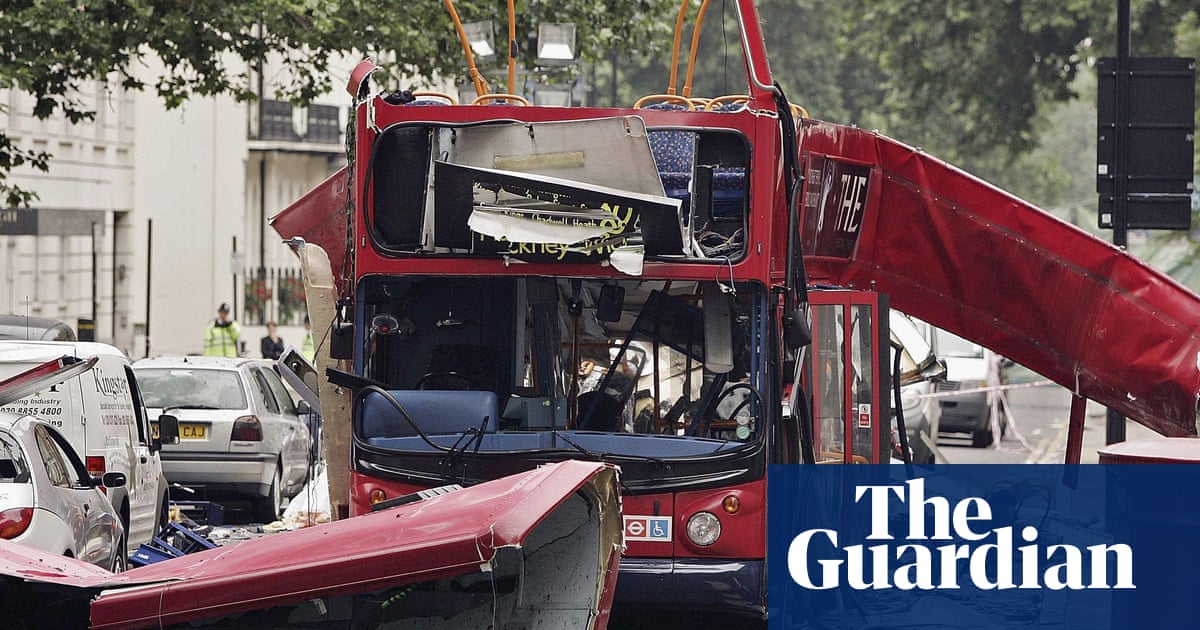Survivors of terror attacks and the families of those killed are among those calling on the media to adopt tighter guidelines on reporting the incidents, after some found out their loved ones had died from reporters on their doorstep.
A new reporting code backed by policing and media figures calls on outlets not to approach bereaved families within the first 48 hours after their loss and to instead make their inquiries via the police.
The guidelines, compiled by the Survivors Against Terror group, call on outlets to coordinate requests to victims and survivors and avoid congregating outside a victim’s home. Newsrooms are also asked to reduce their focus on the names, pictures and manifestos of terrorists, depriving them of the attention they crave.
The guidance is being published before the 20th anniversary of the 7 July terror attacks in London on Monday. Among those backing the guidelines is Ella Young, a survivor of the attack that day on a westbound Circle line train near Edgware Road.
“While I was waiting for an ambulance following the attack I was approached by a man offering to help me contact my husband,” she said. “I later found out he was a journalist. He made no effort to contact my husband but instead – in the days and weeks that followed – he pestered me for interviews and information.
“I was in no fit state to speak to anyone and told him I didn’t want to do any media. But he wouldn’t stop. In the end I had to change my phone number, social media details and emails to get peace. Survivors have been through so much – they shouldn’t have to endure this, too.”
Figen Murray, the mother of Martyn Hett, who was killed in the Manchester Arena attack, said her young daughter found out about her brother’s death from a journalist who knocked on their door. “I can never take that back but I can encourage that we learn the lessons of previous attacks to protect others,” she said.
Also among those supporting the new rules is Darryn Frost, who fought a terrorist on London Bridge with a narwhal tusk. Eight people were killed when three terrorists led by Khuram Butt, 27, drove a van into pedestrians and then began stabbing people on 3 June 2017.
The current editors’ code of practice, overseen by the voluntary Independent Press Standards Organisation (Ipso), only states that, in cases involving grief or shock, “enquiries and approaches must be made with sympathy and discretion”. It also states they must not engage in intimidation, harassment or “persistent pursuit”.
Not all publishers are members of Ipso. Some, such as the Financial Times and the Guardian, have their own codes of practice.
Lloyd Embley, a former editor-in-chief of the Mirror titles, said that, while he backed journalistic freedom and public interest journalism, “I also know we can make mistakes – especially in the aftermath of major events like terror attacks”.
after newsletter promotion
“I think this guidance helps journalists in the heat of the moment think about how we do our jobs while respecting the pain of victims and not falling into the trap of promoting the fear and hatred terrorists seek to spread,” he said.
Neil Basu, a former head of counter-terrorism policing, said the reporting of terrorism was a “key public service”, but could intensify the pain for victims when done badly.
Survivors Against Terror said its recommendations had been tested extensively with regulators, journalists and media lawyers.
Brendan Cox, a co-founder of the group, said: “Media reporting of terror attacks is absolutely in the public interest – what isn’t is intrusion into the lives of victims and survivors. This guidance aims to help journalists strike the balance and we hope media organisations act on it.”
